 I'll give you one more chance to get it right. It's spelled without a “y” but pronounced like there is one. 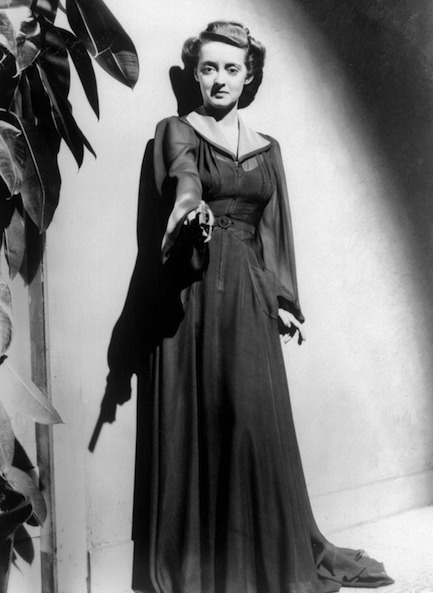
Bette Davis was born with the first name Ruth, but nicknamed Betty from childhood. As an actress she changed the spelling to Bette after Honoré de Balzac's La Cousine Bette, and people mangled the pronunciation routinely until she became a huge star. Speaking of letters, this promo photo is from her 1940 drama The Letter, based on a play by W. Somerset Maugham. Remember how we talked about how outward looking Hollywood was during its golden period, how it set so many films in exotic corners of the world? The Letter is another prime example. It's set on a rubber plantation in Malaya. Thanks largely to Davis's golden touch the film was nominated for numerous Academy Awards, including Best Picture, Best Director, Best Actress, Best Supporting Actor, and Best Score. It won nothing, but we assume the film is good anyway. We'll watch it and report back.
 *sigh* Maybe I should have left this outfit back home and packed a raincoat instead. 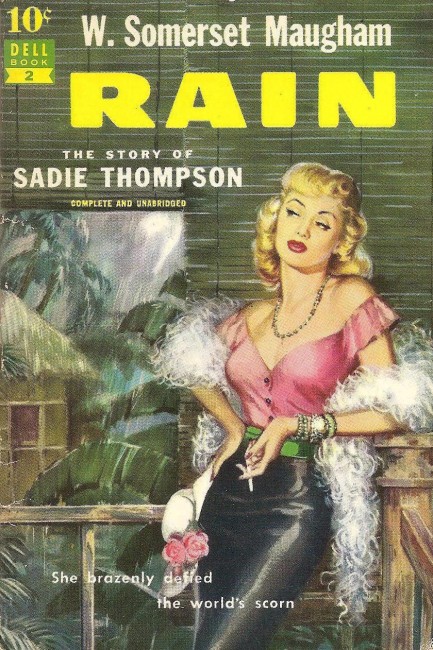
We talked about the 1953 Rita Hayworth film Miss Sadie Thompson back in December. The source material, written by W. Somerset Maugham, first appeared in the literary magazine The Smart Set in 1921 as “Miss Thompson,” and was published by Dell as Rain in 1951. This edition has beautiful cover art from Victor Kalin, belying the dark story Maugham weaves inside. The movie sticks reasonably close to the book, so if you want to know more about the plot you can check here.
 Hayworth hits land and a storm soon follows. 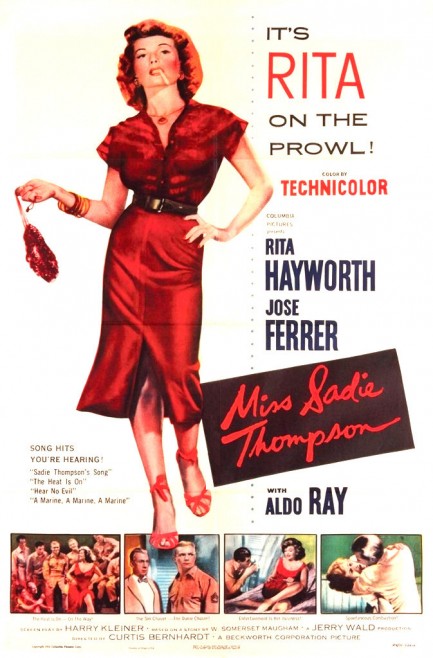
Party girl Rita Hayworth is bound for New Caledonia to start a new job, but makes a stopover on Pago Pago along the way, where her wild ways make a splash at a military garrison and nearby village. A pompous missionary who was on the same boat seems to think Hayworth was run out of Honolulu because she was a prostitute. He has no problem spreading this rumor, but is the point to punish her, save her, or bed her? In style Miss Sadie Thompson is classic Hayworth, with her fun-loving ways raising eyebrows and smiting men around the heart, but in execution the movie falls short of her best. No fault of Rita's, though. She makes the film worth watching, even if it's pretty much guaranteed to leave you going, “Huh?” when the credits roll. Maybe the real value here is the lesson the movie provides about the perils of censorship. Read the W. Somerset Maugham source material and you'll see what we mean. Miss Sadie Thompson premiered in the U.S. today in 1953.
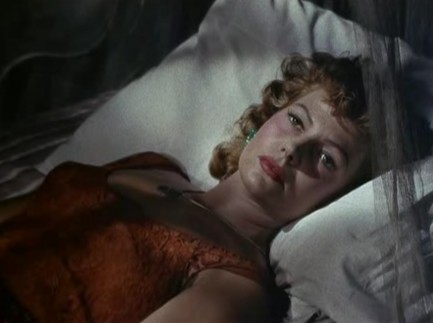 I really don't want to think about what I did in Honolulu. I really don't want to think about what I did in Honolulu.
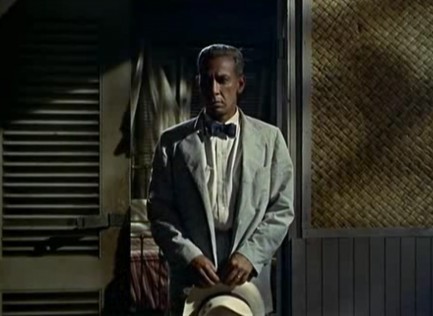 But I want to think about it. I'm thinking about it right now. That's why I'm using a hat to cover my little missionary. But I want to think about it. I'm thinking about it right now. That's why I'm using a hat to cover my little missionary.
 Sadie comes. Sadie comes.
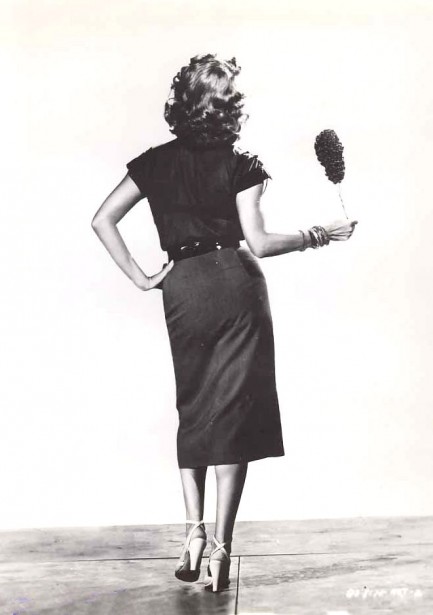 And Sadie goes. And Sadie goes.
 Avon turns over a new Leaf for a Maugham classic. 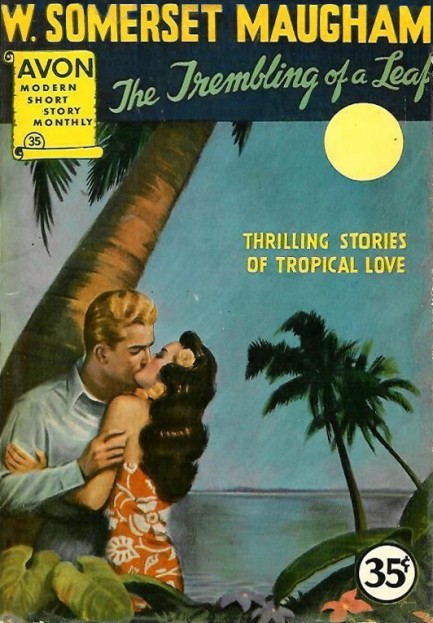
Above, pulp art treatment for W. Somerset Maugham by Avon Books for its Modern Short Story Monthly line. The Trembling of a Leaf was a collection of six tales set in Samoa, Tahiti and Hawaii, and dealing the essential incompatibility of colonial Europeans to island life, and a bit about the nature of travel, something Maugham would return to for his immortal novel The Razor’s Edge. It was originally published in 1921 with a more conservative cover, and Avon produced this sexed-up edition in 1946.
 Hmph. You’re absolutely right, baby. That new razor left no sign whatsoever of your chick-stache. 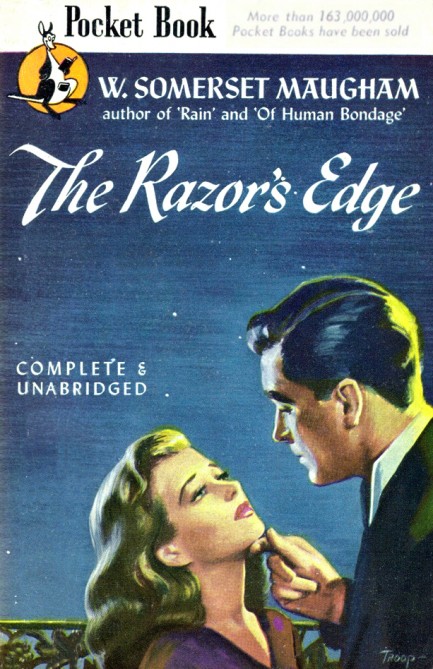
Above, the cover of Pocket Books’ 1946 edition of W. Somerset Maugham’s classic novel The Razor’s Edge, with Miriam Troop art seeming to depict the moment a woman triumphs over her unsightly facial hair. It’ll grow back, of course, but 5 o’clock is hours away. Kiss her you fool! Seriously though, this is one of our favorite books, and it’s probably at least 25% percent of the reason we keep wandering place to place, country to country. It isn’t pulp, but it’s a damn good read. Highly recommended.
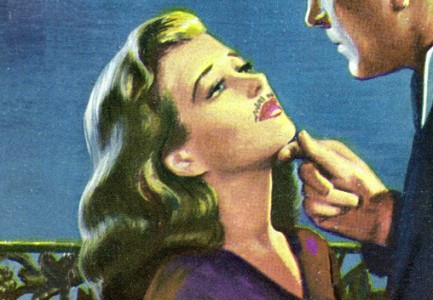
|
 |

The headlines that mattered yesteryear.
1927—Mae West Sentenced to Jail
American actress and playwright Mae West is sentenced to ten days in jail for obscenity for the content of her play Sex. The trial occurred even though the play had run for a year and had been seen by 325,000 people. However West's considerable popularity, already based on her risque image, only increased due to the controversy. 1971—Manson Sentenced to Death
In the U.S, cult leader Charles Manson is sentenced to death for inciting the murders of Sharon Tate and several other people. Three accomplices, who had actually done the killing, were also sentenced to death, but the state of California abolished capital punishment in 1972 and neither they nor Manson were ever actually executed. 1923—Yankee Stadium Opens
In New York City, Yankee Stadium, home of Major League Baseball's New York Yankees, opens with the Yankees beating their eternal rivals the Boston Red Sox 4 to 1. The stadium, which is nicknamed The House that Ruth Built, sees the Yankees become the most successful franchise in baseball history. It is eventually replaced by a new Yankee Stadium and closes in September 2008. 1961—Bay of Pigs Invasion Is Launched
A group of CIA financed and trained Cuban refugees lands at the Bay of Pigs in southern Cuba with the aim of ousting Fidel Castro. However, the invasion fails badly and the result is embarrassment for U.S. president John F. Kennedy and a major boost in popularity for Fidel Castro, and also has the effect of pushing him toward the Soviet Union for protection.
|

|
|

It's easy. We have an uploader that makes it a snap. Use it to submit your art, text, header, and subhead. Your post can be funny, serious, or anything in between, as long as it's vintage pulp. You'll get a byline and experience the fleeting pride of free authorship. We'll edit your post for typos, but the rest is up to you. Click here to give us your best shot.

|
|






 I really don't want to think about what I did in Honolulu.
I really don't want to think about what I did in Honolulu. But I want to think about it. I'm thinking about it right now. That's why I'm using a hat to cover my little missionary.
But I want to think about it. I'm thinking about it right now. That's why I'm using a hat to cover my little missionary. Sadie comes.
Sadie comes. And Sadie goes.
And Sadie goes.








































































